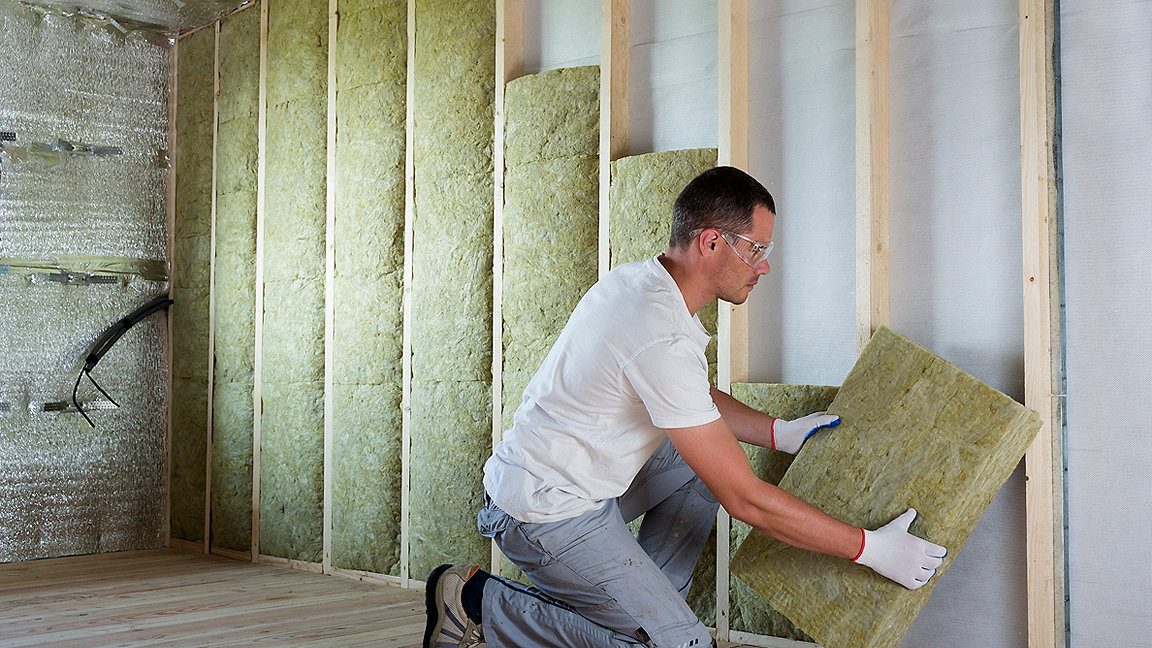
Policy-makers have placed considerable emphasis on energy performance certificates (EPCs) as a basis for numerous measures and funding initiatives. Likewise, registered housing providers and landlords have developed investment strategies and targets that are all based on EPCs.
However, we must remember that certification was principally developed as a means of making like-for-like comparisons between houses at the point of sale or letting. Although EPCs have evolved over time in a bid to present ever-greater insight, they were never intended to provide a wholly accurate representation of the as-built energy efficiency of an individual property. And yet built environment professionals depend on them doing so.
EPCs are based on the standard assessment procedure (SAP), and built environment experts often say that the full SAP is better than the reduced data version. The former is used for new-build compliance sign-off and able to incorporate more detailed inputs, whereas the latter is used for existing buildings and is intended to be quick and less invasive to prepare EPCs at point of sale or letting. The difficulty lies not in the methodology so much as in the quality of inputs.
You can have the best building modelling software in the world, but if you don't accurately tell it where the building is located or how big it is, it will not provide much in return. Therefore, no matter what software they use, a surveyor is always going to need to take physical measurements and make professional observations of buildings.
While there are other voluntary standards such as Passivhaus, BREEAM, LEED and WELL ratings, they all suffer from the same underlying issue when it comes to inputs.
By contrast, Display Energy Certificates for public buildings in the UK present the energy rating performance based on actual meter readings. BREEAM In-use is a similar system, which uses meter readings and internal temperature logs. For such systems to work, however, we need benchmarks against which ratings can be set; meter readings alone don’t account for occupancy and aren’t strictly a direct indicator of the performance of the physical building.
Necessary assumptions skew understanding
The first challenge in obtaining accurate inputs is identifying features that can't be seen. Most surveys – especially those carried out for the purpose of preparing EPCs – aim not to be invasive. It's simply not practical or cost-effective to drill and borescope cavity walls, or take core samples of solid walls and floors.
Neither is it readily possible to survey the thermal mass of buildings, the extent of solar exposure, the presence of thermal bridges – quantified by psi values – or the true impact that weather and occupant behaviours have on the property. These are all critical factors, for which survey techniques and software try to account; but ultimately assumptions and estimates need to be made.
Having measured thousands of buildings, our experience at Build Test Solutions is that these assumptions cumulatively skew our understanding of the way such structures perform. Particularly when it comes to EPCs produced for existing buildings, the number of assumptions and inferences make many homes seem very similar in performance.
The reality is that no two properties are alike. Subtleties such as the age of windows, the quality of the loft insulation installation, and the type and age of cavity wall insulation all make a considerable difference.
One consequence of basing EPCs on such assumptions, for instance, is that registered social landlords are wasting money chasing theoretical ratings while losing sight of why they are retrofitting in the first place.
Obtaining accurate EPC input
In November 2021, the UK government published an EPC action plan, co-authored by the Department for Business, Energy & Industrial Strategy and Department for Levelling Up, Housing & Communities. This identifies that, to improve the accuracy, precision and usefulness of EPCs, the underlying SAP software must be able to accept measured inputs.
That is to say, rather than predict or estimate certain parameters of building performance, surveyors should actually measure these and input the data directly into the calculation. The overall EPC process – the assessors themselves, their training and CPD, the reporting, lodgement and auditing – will all be retained, but the accuracy would be better simply by acknowledging the as-built characteristics of the asset.
The model is in fact remarkably well set up to receive better inputs. In many ways it is simpler for the software to accept a measurement than to compute a range of factors in order to come up with an estimate. By including actual measurements, the EPC would then offer insights that are more instructive in improving appraisal of energy efficiency options and investment decisions. It will also help verify the true impact of any upgrade works after completion.
Measuring whole-building heat loss
The total rate of heat loss through the entire building fabric is one of the most significant metrics. Although it won't tell you the exact source of the heat loss, the measurement – also expressed as a heat transfer coefficient – can replace what are otherwise a huge number of assumptions and estimates.
With the roll-out of smart meters and devices such as smart thermostats, embedded temperature sensors and indoor quality monitors, for example, such measurements are more readily available than ever. Government initiatives such as the Smart Meter Enabled Thermal Efficiency Ratings (SMETER) Innovation Programme have demonstrated how to measure total building heat loss using widely accessible data such as energy consumption and internal temperature.
The programme even found that heat loss can just as readily be measured using manual readings from more conventional meters. Total consumption can be derived from two readings taken three weeks apart rather than at the 30-minute intervals a smart meter provides.
The programme even found that heat loss can just as readily be measured using manual readings from more conventional meters. Total consumption can be derived from two readings taken three weeks apart rather than at the 30-minute intervals a smart meter provides.
'The total rate of heat loss through the entire building fabric is one of the most significant metrics'
Assessing air leakage and U-values
Once heat loss is measured, surveyors need to investigate the primary reasons for it. The first thing is to assess airtightness, and then to understand the thermal performance of individual building elements such as walls, floors and roof.
Already widely practised, air leakage testing measures the amount of air movement between the inside and outside of a building; it is also referred to as measuring the permeability or airtightness of a building. This is an important measurement because excessive air movement can account for around a third of a building's total heat loss and energy consumption; notwithstanding that sufficient fresh air is also required for a healthful internal environment.
Air movement occurs in two forms: first, through deliberate ventilation, such as air supplied through a mechanical system or a controlled opening; second, through infiltration, which is unintentional air movement through cracks and gaps in the building fabric. The latter leads to heat from the house being lost, increasing energy costs and lowering the EPC rating.
General understanding of air leakage in existing homes is fairly limited, but PAS 2035 retrofit standards are now mandating much more widespread testing on existing buildings.
The good news is that this need not be expensive. Testing 100% of new-build plots is already a legal requirement, but when done at high volume the cost can be as low as £50 per property even when this entails a dedicated site visit. If a surveyor is already on site and owns the kit, a test can be done in less than 15 minutes.
Testing is beginning to highlight the sheer level of variation in airtightness across different building types, construction methods and ages, which are otherwise extremely difficult to estimate.
The effectiveness of a wall, floor or roof, for instance, in preventing heat from escaping from a house can be measured by its U-value. In simple terms, the lower the U-value the better insulated the fabric of a building is, and thus the lower the heat loss and energy consumption.
However, unless you know the true build-up of a wall or floor or how it is affected by convective air movement, radiative effects and the weather, it is very difficult to predict the U-value accurately.
U-values can therefore instead be measured using equipment such as a Heat3D infrared thermography-based device or heat-flux plates. These measurements allow much better understanding of the as-built performance of a given building element before adding insulation or carrying out retrofit works.
New technology and advances in physics
In recent years, the advent of low-cost sensors, smart meters and advances in understanding of building physics have meant that building measurements are more accessible and affordable than ever before. This allows us to replace assumptions in our energy models with more reliable measured inputs, specific to the building in question. As a result, building ratings can now be as accurate as technologically possible, while still being produced at scale and cost-effective.
The future of EPCs
The growing use of measurements is also showing that EPCs do not accurately reflect the behaviours of certain building types. For example, certification has not adequately accounted for the better performance of older buildings with thick stone walls, or the airtightness of many mid-century properties with solid concrete floor slabs, wet-plastered walls and ceilings, and uPVC windows. Measurement-based inputs prove this much more clearly in many cases.
By accepting a greater number of measured inputs, EPCs can develop further. The technologies now available present fantastic opportunities for surveyors prepared to start offering measurement services. This will improve the accuracy of insights into building energy efficiency measures for homeowners, landlords, lenders and insurance companies.
Benefits of measurement technology
We're not advocating that EPCs are thrown out and replaced with something entirely new at huge cost and upset. Instead certification could continue as it is – but at not much extra cost, the accuracy, precision and usefulness of EPCs could be drastically improved by the use of measurement technology.
EPCs currently lodge at around £60 on average, and with measurement carried out by the same surveyor one might expect the price to be closer to £150–£200. However, the certification is then much more accurate and instructive in terms of helping appraise retrofit options. Indeed in some cases, it highlights that little to no upgrade is actually needed. While adding cost to the process, this means EPCs would offer much better whole-life value.
Due to the conservative nature of the assumptions used in both the full SAP and the reduced data version, replacing them with accurate, measured inputs can in fact often deliver higher EPC ratings, helping buildings comply with minimum energy efficiency standards and command better sale prices and lending rates.
Of course, that's not to say we should not invest in upgrades, rather it is to highlight where money is to be best invested to deliver real benefit – as opposed to blindly chasing theoretical performance gains.
'At not much extra cost, the accuracy, precision and usefulness of EPCs could be drastically improved by the use of measurement technology'
Luke Smith is managing director of Build Test Solutions
Contact Luke: Email
Related competencies include: Construction technology and environmental services, Sustainability

